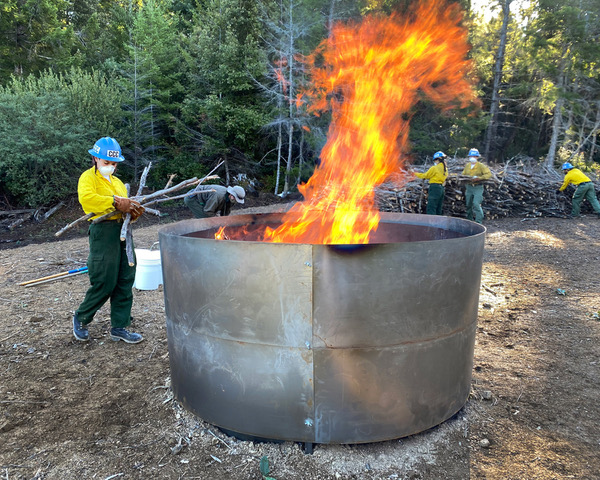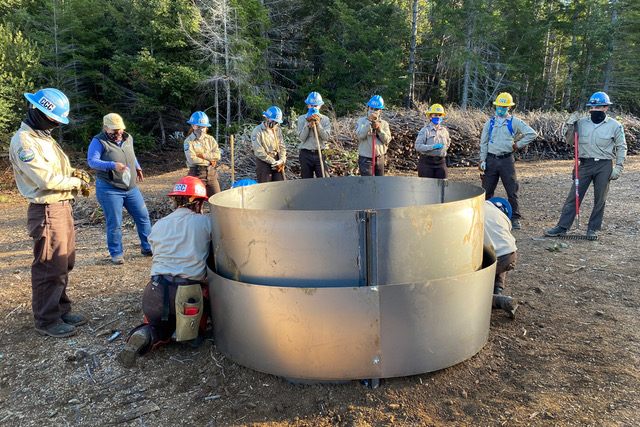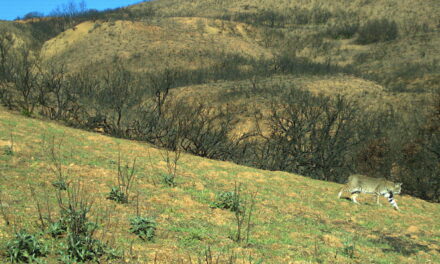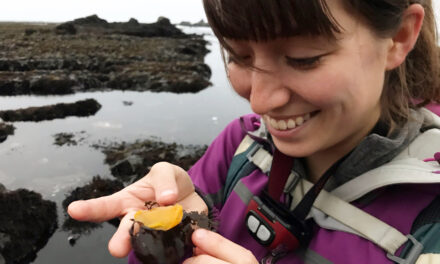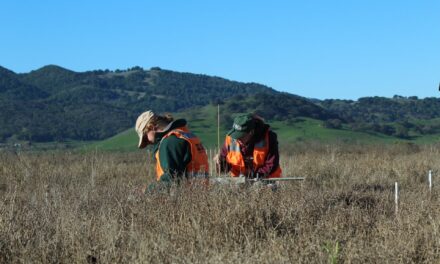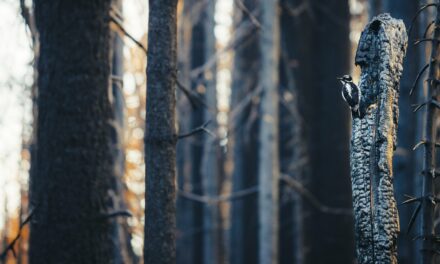Betting on Biochar
When asked about the ways in which a little trick of heat and wood can help California’s myriad climate-related woes, David Morell doesn’t try to hide his enthusiasm: “It’s pretty magical.” Morell, whose 40-plus years in environmental fields has spanned time with the EPA and consulting work for the World Bank Conservation Foundation, is now heading the Board of Directors of the Sonoma Ecology Center and betting big on biochar.
The name “biochar,” sounding reminiscent of mega biotechnology companies, belies the stuff’s inherent simplicity: wood waste reduced into a charcoal-like substance through an oxygen-poor burning process called pyrolysis.
“Basically what you get is a physical structure of elemental carbon by driving off all of the other elements of the wood,” says Morell describing the pyrolysis process. Rather than entering the atmosphere as carbon dioxide as it would during conventional wood combustion, the carbon remains as a solid, sequestered and lined up for a host of further uses.
Workers from the California Conservation Corps assemble the kiln. Photo: David Morell.
Biochar contains “literally millions of little pores,” says Morell. “These pores act as little houses for microbes in the soil and they hold water.” When biochar is added to soil, as it was at the Oasis Vineyard in Monterey County, it can help improve soil health and water retention, further reducing the need for chemical fertilizers and irrigation.
“Think of it like a coral reef in the ocean. It attracts the little fish, and the big fish come for the little fish.” Morell is fast with analogies to describe the magic of biochar, and he offers up another for how it also mitigates pollutant runoff on roads: “It works like the activated carbon in a Brita filter,” catching particles and filtering them out. Caltrans is currently building a bioswale with biochar on the congested convergence of Interstates 680 and 880.
How to Use It?
Through a grant from Cal Fire, Sonoma Ecology Center is bringing a biochar production machine into California to be installed in Vallejo’s Mare Island. Before it can be brought west from Iowa, where it was manufactured, the Center has to ensure that air emissions test results are up to snuff and Bay Area air quality regulators will permit its use.
While pyrolysis doesn’t have the same degree of emissions as a traditional combustion fire would, it still has some, and starting the reaction requires a small amount of propane. Wood waste from fire prevention activities in California’s forests would also have to be transported to the Bay for it to be turned into biochar. However, Morell and the Sonoma Ecology Center are experimenting with portable machines called flame-cap kilns that can be loaded onto a pickup truck, assembled, and used on the same site where the wood was harvested.
Other Recent Posts
Who Will Inherit the Estuary? Training for a Rough Future
The six-month program teaches students aged 17 -24 about the challenges facing communities around the SF Estuary, from Stockton to East Palo Alto.
Split Verdict Over State of the Estuary
Habitat restoration and pollution regulations are holding the Bay steady, but the Delta is losing some of its ecological diversity, says SF Estuary Partnership scorecard.
Volunteers Catch and Release Tiny Owls For Science
In Santa Rosa, citizen scientists capture northern saw-whet owls to help further research on climate impacts to the bird.
Antioch Desalination Plant Could Boost Local Water Supply
The $120 million plant opened this fall and treats 8 million gallons of brackish water a day, 75% of which is drinkable.
How Cities Can Make AI Infrastructure Green
Data centers fueling AI can suck up massive amounts of energy, water and land, but local policies can mitigate the impact.
What to Know about PFAS in Tri-Valley Water
In this nonfiction comic, explore how the city of Pleasanton is dealing with PFAS- contaminated groundwater.
ReaderBoard
Once a month we share reader announcements: jobs, events, reports, and more.
Artist Repurposes Shoreline Detritus
Courtney Griffith scours beaches and parks for everything from plastic to charcoal, mangled ropes and burnt wood to use in her work.
After The Fire: Scenes from Chinese Camp
One of California’s oldest Gold Rush settlements takes stock after a devastating fire — a photo essay.
Youth Group Tackles Heat Islands in Santa Rosa
A new youth advisory team convened by the Greenbelt Alliance and Latino Service Providers is exploring heat disparities in southwest Santa Rosa.
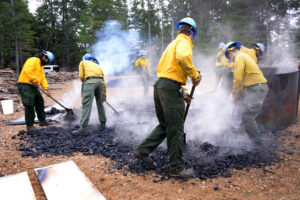
“Biochar came to me because it integrates these different pieces — we take wood created from activities that reduce forest fire risk and we turn it into sequestered elemental carbon that improves soil, lessens agricultural runoff, and holds water to reduce water loss.”
While it remains to be seen how widely it can be implemented, it seems that Morell’s belief in the benefits of “magical” biochar holds its own water.
CCC workers rake out and extinguish the coals to save as much carbon as possible as biochar. Photo: David Morell.






